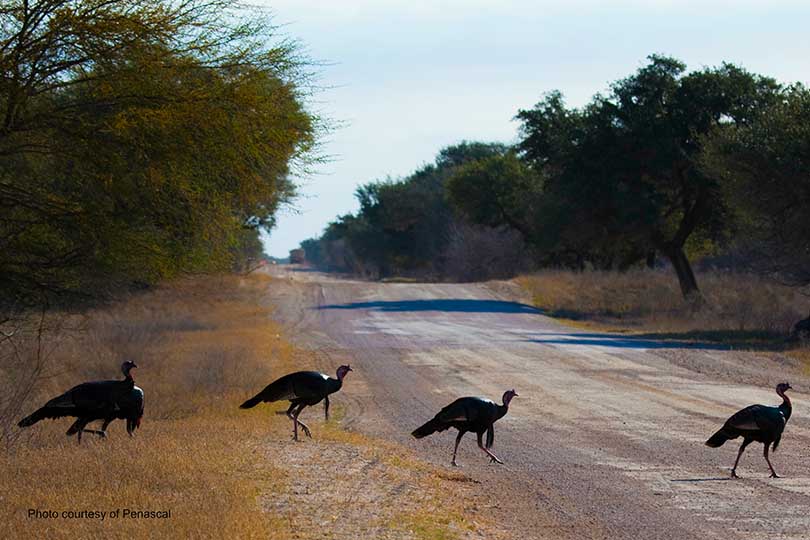The spring turkey season should be a good one for Texas hunters, according to state wildlife biologists.
Increased bird numbers and improved habitat should be hallmarks of the spring hunting season that begins in the South Zone on March 18 for Rio Grande wild turkeys.
“Everything’s looking really good so far. We had a great hatch in 2014 and another good hatch in 2015. We’re expecting to see a good number of mature birds out there this year. I’m looking forward to the spring season,” said Jason Hardin, upland game bird specialist with the Texas Parks and Wildlife Department, in an interview with the Texas Farm Bureau (TFB) Radio Network.
Hardin said he’s been told fall turkey hunters across the state have been seeing plenty of birds. For the most part, fall turkeys are taken by deer hunters who opportunistically harvest a bird while deer hunting.
While wild turkey populations have increased in recent years, he said landowners and wildlife managers should always be thinking about nesting cover and roosting habitat for the birds.
“Most of our turkeys would prefer to nest in a site that has a lot of residual herbaceous cover, your grasses and forbs, that low growing brush. We need to make sure that we leave enough herbaceous cover to provide some screening cover when those hens are nesting. That will help from one year to the next,” Hardin said. “We’re not always going to have good, wet years in Texas like we have been fortunate to have the last few years.”
Breeding in Rio Grande wild turkeys in Texas usually begins in early spring in southern Texas and continues through July and August in central and northern Texas. Once a nesting location is selected, the hen scratches a shallow depression in the ground but makes little other nest preparation.
Hens usually lay one egg per day. Clutch size averages 10 to 11 eggs, but ranges from eight to 16 eggs. Incubation begins when the last egg is deposited in the nest and continues for about 28 days, according to biologists.
Of the five subspecies of wild turkeys, only the Eastern, Rio Grande and Merriam’s wild turkeys occur in Texas.

